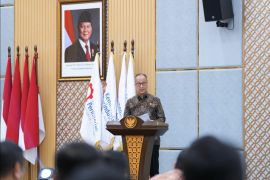Jakarta - The Society for Ecology-based Law Reform (HuMa) has stated that current agrarian conflicts in some areas in Indonesia were the legacy of colonial era. "The root of agrarian conflicts originated from the colonial period to the 'verklaring' domain principle," said Analyst and Conflict Resolution HuMa, S Rakhma Mary, during the launch of Outlook Natural Resources and Agrarian Conflict here on Friday. According to the veklaring domain principle, all lands whose ownership could not be proved were the state property. She said, the conflict continued until the New Order era which put people's lands to the plantation area and in the reform era plantation licenses continued. "Agrarian conflict has the characteristic that spread evenly, appearing in a variety of areas, widespread and sustained," she said. The data showed, there were 232 natural resources and agrarian conflicts over the last seven years since 2006 which took place in 98 districts or cities in 22 provinces. Extent of the conflict area reached 2,043 million hectares or more than 20 thousand square kilometers. HuMa recorded 91,968 people from 315 communities have been victims of the natural resources and agrarian conflicts. Plantation sector is the biggest conflict of the 119 cases with an area of 415 thousand hectares. While 72 cases of forestry conflict in nearly 1,3 million hectares of land in 17 provinces and 17 cases of mining conflicts with land area of 30 thousand hectares. (*)









